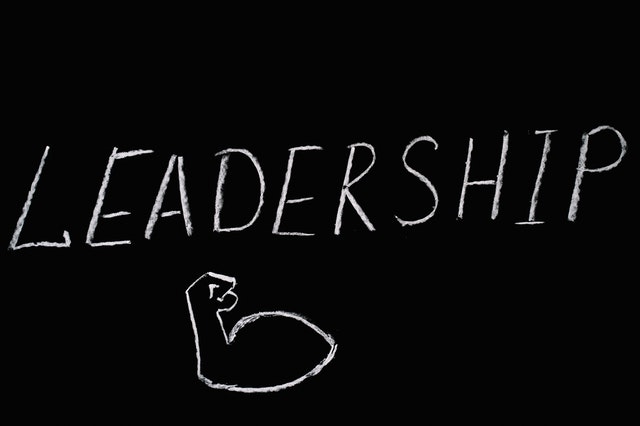BURNOUT - Is it a Leadership Issue?

Do You' experience constant daily disruptions due to excessive meetings? Do you feel you're constantly being overloaded with work? Do you have little or no control over your work? Are your stress levels reaching a point where you cant concentrate, and feel that everything is spinning out of control?
If you answered Yes to the majority of these questions, it's likely you're experiencing job burnout or your on the pathway to it.
According to the prestigious Mayo Clinic in the U.S. job burnout isn’t a medical diagnosis. But it is a real phenomenon:
"Job burnout is a special type of work-related stress — a state of physical or emotional exhaustion that also involves a sense of reduced accomplishment and loss of personal identity". [1]
In fact, Job burnout has slowly but surely become the greatest occupational hazard of the 21st century. So, much so, that its now been officially recognized by the World Health Organization (WHO), to the point of including it into the International Classification of Diseases (ICD-11). Although, the medical profession argues it’s not to be interpreted as a disease as such.
In March 2021, Microsoft's Work Trend Index survey polled 30,000 people from a variety of companies in 31 countries and used trillions of data points around labour and productivity from Microsoft's 365 software and LinkedIn network. Microsoft survey findings reported that 54% of US workers are overworked and actively burned out at work, with 39% saying they're exhausted'. [2]
Research indicates that the average manager was losing one day a week to email and other electronic communications and two days a week to meetings. And employees also experience excess demands on their daily work time which is often lost on unproductive activities. In knowing that the data found burnout to be globally widespread and concerning. It’s timely, to bring your attention to the latest research as to why' it's really occurring.
Burnout - What Really Causes It?
At this point, let me draw your attention to a social psychologist expert and author about burnout, Professor Christina Maslach, from University of California, Berkeley, in the U.S. In fact, she was actively involved in a research team to develop the gold standard of measuring burnout – aptly named the Maslach Burnout Inventory (MBI). Professor Maslach was very adamant in her opinions of workplace burnout and why it occurs.
According to Maslach, burnout happens at the place where mental and emotional fatigue, physical exhaustion, and a sense of disconnection meet. And there’s a growing body of research telling us the it is the responsibility of organizations to end it, not of the people who work for them. Maslach says.
“The bottom line on burnout is that it is a social phenomenon, not an individual weakness.”
According to the Maslach Burnout Inventory, developed partly by Professor Maslach these six aspects make a workplace prone to burnout: Demand overload; Lack of control; Insufficient reward; Socially toxic workplace; Lack of fairness; and Value conflicts.
Further evidence exists as can be seen from a Gallop survey of 7,500 employees which also contributed to her opinion - as, it clearly demonstrates the causes of burnout. This being, that the causation of burnout is more so the result of the leadership within the working environment, rather than the employees themselves.
These survey findings also highlighted the following: ‘unfair treatment at work; unmanageable workloads; unreasonable time pressures to complete job tasks; to a lack of communication, role clarity and support from their manager’.

Burnout - What are the Consequences?
The relationship between stress and burnout is well researched and documented and much of the evidence indicates a relationship between burnout and excessive ongoing stress levels. Which in turn, lead onto feelings of becoming emotionally overwhelmed or exhausted to triggering illness or disease.
According to Jennifer Moss, a workplace expert journalist and author of the book ‘The Burnout Epidemic.’ She says that “Burnout is about the workplace, not your people.”
In her published article for Harvard Business Review she referred to a study conducted by the American Psychological Association (APA) that claims that burned-out employees are 2.6 times as likely to be actively seeking a different job, 63 per-cent are more likely to take a sick day, and 23 per-cent more likely to visit the emergency room. [4]
It's these forces that not only rob employees of time to concentrate on completing complex tasks or for idea generation, they also tend to minimize the downtime that is necessary for their personal relaxation or mental restoration.

Burnout - The 10 Commandments on How to Address it
Having studied Leadership as a main thrust of my MBA, I am adamant that many institutions are missing the vital point. Firstly, that it can often be the leadership's failure to understand that their employees want more than a job. They want a full experience. But, more importantly they want to be part of a healthy culture that recognizes their individual needs and ambition.
Here’s a super-simple listing breakdown on how supervisors and leaders can achieve that:
1] Provide opportunities for growth and development - learn about employees’ preferred communication styles and practice them.
2] Let your workers know that their work is making an impact - make them feel appreciated for their work input. Provide continuous and timely positive feedback.
3] Give your employees a sense of autonomy and individuality - it pays to give people back control of their days and time.
4] Avoid micromanaging - as, this is another major irritator and contributor to stress.
5] Build a culture of gratitude - say thank you verbally face-to-face, in writing (through hand-written thank you notes or in-house recognition platforms).
6] Adopt an inclusive transformational leadership style - autocratic management has now become ancient and problematic.
7] Offer regular professional development training and up-skilling short courses - training makes employee's feel valued and confident.
8] Bring greater discipline to time management - Cull back-to-back meetings and Block meeting-free times for deep work or mandate 90-minute free time windows.
9] Ensure workers are gain job security and confidence - ensure their compensation is fair for all.
10] Promote a work environment that promotes well-being for your workers - offering access to a local gym, in-house massage, virtual group classes, or a company-wide fitness challenge.
Conclusion
Everyone knows the human toll of burnout. But not everyone understands what high end researcher Eric Garton says in his book 'Time, Talent, & Energy' that,
'Employee burnout is a problem with the company, not the person'. [5]
Unchecked organizational norms or for a better phrase 'a toxic culture' can insidiously create and enhance the conditions for burnout. Which is why leaders need to change their approach, so as to make burnout less likely. But more importantly, stop workers actively seeking a different job or taking a sick day, or dare I say it, visiting the emergency room.
That way Everybody wins!

References:
1] Mayo Clinic (2021). 'Job burnout: How to spot it and take action - Feeling burned out at work? Find out what you can do when your job affects your health.' Healthy Lifestyle, June 5, 2021. Cited online at https://www.mayoclinic.org /healthy-lifestyle/adult-health/in-depth/burnout/art-20046642. Cited on 30 December 2021.
2] Bass, D., (2021).'Bosses are clueless that workers are miserable and looking to leave.' Online article published in Bloomberg, Technology: 22 March, 2021. Cited online at https://www.bloomberg.com/news/ articles/2021-03-22/bosses-are-clueless-that-workers-are-miserable-and-looking-to-leave. Accessed 30 December 2021.
3] Maslach, C., (2021).'Why were burned out and what to do with it.' American Psychological Association. Cited as a YouTube educational video, available at https://www.youtube.com/watch?v=oQy1Zc37Bd0. Published 28 July 2021
4] Moss, J. (2019). ‘Burnout is about your workplace, not your people.’ Blog article published in the Harvard Business Review. December 11, 2019. Accessed online at https://hbr.org/2019/12/burnout-is-about-your-workplace-not-your-people. 29 December 2021.
5] Garton, E., (2017). ‘Employee burnout is a problem with the company, not the person.’ Harvard Business Review. Business Management. April 06, 2017. Cited online at https://hbr.org/2017/04/employee-burnout-is-a-problem-with-the-company-not-the-person?ab=at_art_art_1x1
Photo Image Credits:
1. Pexels -Vlada Karpovich, 2. Pexels - Yan Krukev, 3. Pexels - Anna Tarazevich

